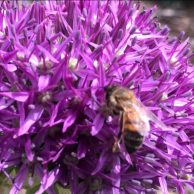 Pollinator week is a special time for Harlequin’s Gardens – a time when we can celebrate the hard-work of bees (honeybees, solitary bees, bumblebees) wasps, ants, flies and bee flies, butterflies and moths, beetles, some bats and birds, and some mammals. They’re all around us, connecting the dots between flowers and food.
Pollinator week is a special time for Harlequin’s Gardens – a time when we can celebrate the hard-work of bees (honeybees, solitary bees, bumblebees) wasps, ants, flies and bee flies, butterflies and moths, beetles, some bats and birds, and some mammals. They’re all around us, connecting the dots between flowers and food.
Come check out our special pollinator display, which is our whole facility! Our perennial signage is marked with bee, hummingbird, and butterfly icons, but almost everything is important to bees, of which we have over 500 species here in Boulder County alone. Even our native bunch grasses can provide nesting sites for bumblebees in the dried leaves at the bottom. [Read More]

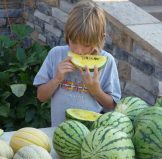 Do you love the sweet fruits and vegetables of late summer as much as we do? Well then, PLANT THEM NOW! We’ve got the heat now, which they thrive on. To develop those natural sugars, these crops take more time to mature than many other veggies, mostly between 70 and 100 days from seeding. We’ve saved you some time by growing starts, LOTS of them, and most of the varieties we’ve chosen will mature relatively early.
Do you love the sweet fruits and vegetables of late summer as much as we do? Well then, PLANT THEM NOW! We’ve got the heat now, which they thrive on. To develop those natural sugars, these crops take more time to mature than many other veggies, mostly between 70 and 100 days from seeding. We’ve saved you some time by growing starts, LOTS of them, and most of the varieties we’ve chosen will mature relatively early. In October of 2018, we were asked by the
In October of 2018, we were asked by the 
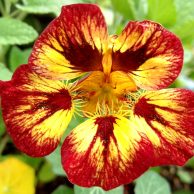 Incorporating edible flowers in your cuisine not only adds visual appeal, but also can offer high nutritional value and great flavors. Edible flowers have been used for millennia in many cultures to enhance everything from salad to beer and wine. A quick internet query on “ancient edible flower recipes” revealed many results. It could be a fun family event to recreate a heritage recipe!
Incorporating edible flowers in your cuisine not only adds visual appeal, but also can offer high nutritional value and great flavors. Edible flowers have been used for millennia in many cultures to enhance everything from salad to beer and wine. A quick internet query on “ancient edible flower recipes” revealed many results. It could be a fun family event to recreate a heritage recipe!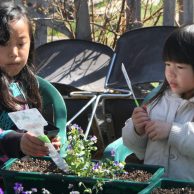
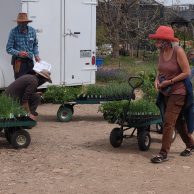 Meet our Staff!
Meet our Staff!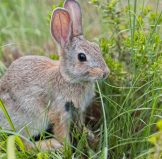 Have you found that rabbits are becoming more rampant?
Have you found that rabbits are becoming more rampant? Many odor repellents can be helpful, including our non-toxic Plantskyyd (in liquid and pellet forms), and Bobbex liquid concentrate or ready-to-use spray. Although non-toxic, you may not want to use these products on edibles. Also, remember to reapply according to directions taking into account current precipitation and irrigation rates.
Many odor repellents can be helpful, including our non-toxic Plantskyyd (in liquid and pellet forms), and Bobbex liquid concentrate or ready-to-use spray. Although non-toxic, you may not want to use these products on edibles. Also, remember to reapply according to directions taking into account current precipitation and irrigation rates.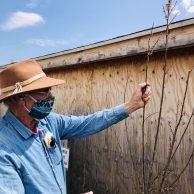 Don’t be in a hurry to prune dead branches on woody plants this spring! Last fall we had warm weather followed by a fast-deep freeze, and this spring we had an 11-degree freeze after some leaves were out. Some branches and some whole shrubs may have died, but most will put out new leaves. So, it is best to wait another couple of weeks before pruning.
Don’t be in a hurry to prune dead branches on woody plants this spring! Last fall we had warm weather followed by a fast-deep freeze, and this spring we had an 11-degree freeze after some leaves were out. Some branches and some whole shrubs may have died, but most will put out new leaves. So, it is best to wait another couple of weeks before pruning.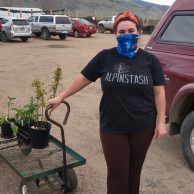 THANK YOU!
THANK YOU!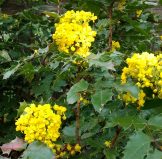 The ancient proverb “March winds and April showers bring forth May flowers” could be revised for Colorado as “March and April heavy snow, freezing temps, and strong winds bring forth May flowers”! And this year was no exception. Two recent cold snaps with temperatures reaching lows of 3 degrees F in our neighborhood, snows up to 36” in the foothills, and winds that will bring down any weak tree branches, wreaked havoc and impacted flower and fruit productivity. So now it’s time to help support our shrubs and trees to recover.
The ancient proverb “March winds and April showers bring forth May flowers” could be revised for Colorado as “March and April heavy snow, freezing temps, and strong winds bring forth May flowers”! And this year was no exception. Two recent cold snaps with temperatures reaching lows of 3 degrees F in our neighborhood, snows up to 36” in the foothills, and winds that will bring down any weak tree branches, wreaked havoc and impacted flower and fruit productivity. So now it’s time to help support our shrubs and trees to recover.
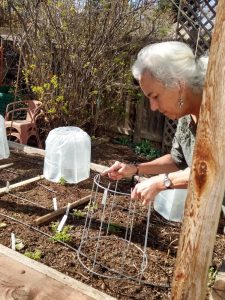 1-Place the wire cage on the desired spot, pressing the legs firmly into the soil so the bottom ring sits on the soil surface.
1-Place the wire cage on the desired spot, pressing the legs firmly into the soil so the bottom ring sits on the soil surface. 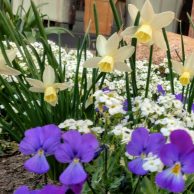 April 22 is Earth Day, originally planned to bring a billion people into the streets to let our leaders know for sure that the health and resilience of our planet and our environment is of the Utmost Importance. Of course, neither a billion nor a dozen people are going to congregate on Earth Day this year.
April 22 is Earth Day, originally planned to bring a billion people into the streets to let our leaders know for sure that the health and resilience of our planet and our environment is of the Utmost Importance. Of course, neither a billion nor a dozen people are going to congregate on Earth Day this year.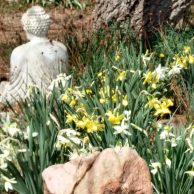
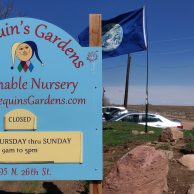 We’re wearing our masks, keeping our distance, disinfecting, etc. It couldn’t be more obvious that we are all connected by the air we breathe in and the biology we breathe out and share through what we touch. It’s not all bad. The microbes in our guts are responsible for helping digest our food and supporting our immune system. Not only that, but 90% of the cells in our bodies are microbe cells, and only 10% are human cells. Kinda makes ya think.
We’re wearing our masks, keeping our distance, disinfecting, etc. It couldn’t be more obvious that we are all connected by the air we breathe in and the biology we breathe out and share through what we touch. It’s not all bad. The microbes in our guts are responsible for helping digest our food and supporting our immune system. Not only that, but 90% of the cells in our bodies are microbe cells, and only 10% are human cells. Kinda makes ya think.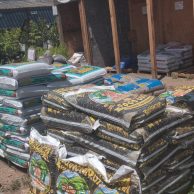 It wasn’t too long ago when Harlequin’s Gardens only accepted cash (and we would extend credit to those customers who didn’t have cash with them). And now here we are, only accepting credit cards to help minimize contact and maximize social distancing. (Thankfully we had set-up our credit card system a few years ago.) We’re continuing to evolve by introducing
It wasn’t too long ago when Harlequin’s Gardens only accepted cash (and we would extend credit to those customers who didn’t have cash with them). And now here we are, only accepting credit cards to help minimize contact and maximize social distancing. (Thankfully we had set-up our credit card system a few years ago.) We’re continuing to evolve by introducing 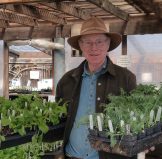
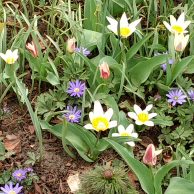 A couple of days ago, I decided to trim back the clumps of Narbonne Flax in my garden, which had been bent over by the heavy snow in March. I grabbed my hedge clippers and cut the first clump down to about 8”. Then I took a closer look at it. Something was in there, and it wasn’t a wad of dry redbud leaves. I had just missed cutting through a Praying Mantis egg case by about a quarter of an inch! A little shaken and much relieved, I inspected all the other clumps carefully before trimming the rest.
A couple of days ago, I decided to trim back the clumps of Narbonne Flax in my garden, which had been bent over by the heavy snow in March. I grabbed my hedge clippers and cut the first clump down to about 8”. Then I took a closer look at it. Something was in there, and it wasn’t a wad of dry redbud leaves. I had just missed cutting through a Praying Mantis egg case by about a quarter of an inch! A little shaken and much relieved, I inspected all the other clumps carefully before trimming the rest. At Harlequin’s Gardens we always knew that nurseries in Colorado are seasonal, but our commitment to local, sustainable, high quality, beautiful, delightful, unusual and innovative is eternal. One of our owners, Eve Reshetnik Brawner, also happened to be a multi genre artist with artisan friends making amazing items without enough ways to sell them. So nine years ago we germinated the idea of a Holiday Gift Market that would not only provide our cherished customers with items that reflected the reputation we’ve tended with our outstanding nursery stock and sustainable garden center items, but would also keep our dedicated and amazing staff working in the off-season.
At Harlequin’s Gardens we always knew that nurseries in Colorado are seasonal, but our commitment to local, sustainable, high quality, beautiful, delightful, unusual and innovative is eternal. One of our owners, Eve Reshetnik Brawner, also happened to be a multi genre artist with artisan friends making amazing items without enough ways to sell them. So nine years ago we germinated the idea of a Holiday Gift Market that would not only provide our cherished customers with items that reflected the reputation we’ve tended with our outstanding nursery stock and sustainable garden center items, but would also keep our dedicated and amazing staff working in the off-season. Cayenne pepper can stop bleeding. Garlic helps alleviate a toothache. Honey soothes a burn. When an emergency situation arises, simple home remedies can play a vital role in easing symptoms and providing immediate help. Become an effective first responder with a combination of best first-aid practices, herbs, and standard homeopathic applications.
Cayenne pepper can stop bleeding. Garlic helps alleviate a toothache. Honey soothes a burn. When an emergency situation arises, simple home remedies can play a vital role in easing symptoms and providing immediate help. Become an effective first responder with a combination of best first-aid practices, herbs, and standard homeopathic applications.  Look at the world beyond the limits of your eyes with these 4x magnification binoculars that are lightweight and designed for small hands. The attached neck strap keeps the binoculars handy and can be stored in the handy carrying case when not in use.
Look at the world beyond the limits of your eyes with these 4x magnification binoculars that are lightweight and designed for small hands. The attached neck strap keeps the binoculars handy and can be stored in the handy carrying case when not in use. There’s so much adventure and wonderment for young eyes, and it can take place with these wonderful items: Butterfly Tattoos, Backpack Explorer Kits (On the Nature Trail, Bug Hunt, Discovering Plants and Flowers) and Nature Smarts Workbooks for various ages.
There’s so much adventure and wonderment for young eyes, and it can take place with these wonderful items: Butterfly Tattoos, Backpack Explorer Kits (On the Nature Trail, Bug Hunt, Discovering Plants and Flowers) and Nature Smarts Workbooks for various ages.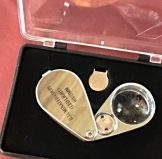 This very small, extremely high quality 12x power magnifier is great for getting a closer look at what’s bugging your plants, taking out splinters, or helping to identify flowers.
This very small, extremely high quality 12x power magnifier is great for getting a closer look at what’s bugging your plants, taking out splinters, or helping to identify flowers.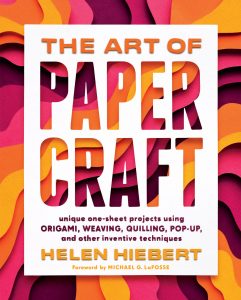
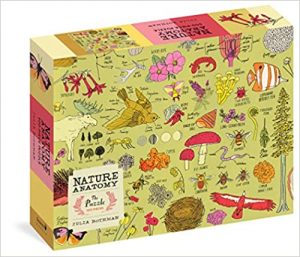 We are stocking classics AND a plethora of NEW puzzles!
We are stocking classics AND a plethora of NEW puzzles!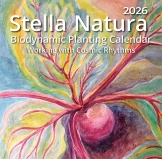 The Stella Natura Wall Calendar is an easy-to-use, informative and beautiful planting and gardening calendar that shows the best times to take advantage of the cosmic influences of the moon, sun and planets. This is a research-based system that is used by Biodynamic farmers and gardeners.
The Stella Natura Wall Calendar is an easy-to-use, informative and beautiful planting and gardening calendar that shows the best times to take advantage of the cosmic influences of the moon, sun and planets. This is a research-based system that is used by Biodynamic farmers and gardeners.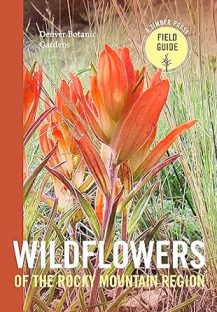 Wildflowers of the Rocky Mountain Region, the most complete, up-to-date field guide for identifying a huge number of our wildflowers. All of the plants are described, located, and photographed, and arranged in an easy-to-use format.
Wildflowers of the Rocky Mountain Region, the most complete, up-to-date field guide for identifying a huge number of our wildflowers. All of the plants are described, located, and photographed, and arranged in an easy-to-use format.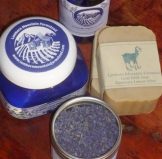

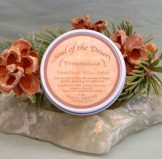
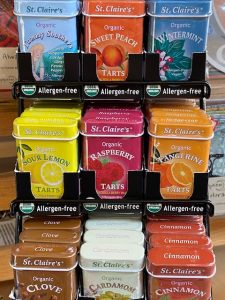 Yea – totally organic! Made by herbalist Debra St. Claire! No corn syrup! Delicious! Effective! Packaged in pretty, reusable tins (some staff use these for seed saving)! Incredibly inexpensive! Lots of flavors! Great stocking stuffers!
Yea – totally organic! Made by herbalist Debra St. Claire! No corn syrup! Delicious! Effective! Packaged in pretty, reusable tins (some staff use these for seed saving)! Incredibly inexpensive! Lots of flavors! Great stocking stuffers!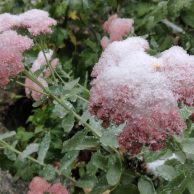 As Colorado gardeners, we’ve come to expect snow in October (last year it was October 10), but September?! In the past 24 hours, we saw a temperature swing of more than 60 degrees, going from record-breaking heat to one of the earliest recorded snow falls in the state (the earliest recorded area snowfall was in 1961 when Denver received over 4″ of snow on Labor Day).
As Colorado gardeners, we’ve come to expect snow in October (last year it was October 10), but September?! In the past 24 hours, we saw a temperature swing of more than 60 degrees, going from record-breaking heat to one of the earliest recorded snow falls in the state (the earliest recorded area snowfall was in 1961 when Denver received over 4″ of snow on Labor Day).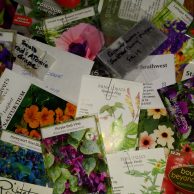
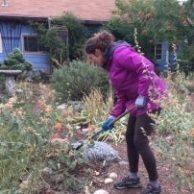 It’s the time of year to ready our gardens for the upcoming fallow winter season and prepare for next year’s growth. We do this knowing that regeneration will be occurring in our soil, with the microbes and with overwintering insects. Here are tips for you to best help this process take place, while still having an aesthetically pleasing garden.
It’s the time of year to ready our gardens for the upcoming fallow winter season and prepare for next year’s growth. We do this knowing that regeneration will be occurring in our soil, with the microbes and with overwintering insects. Here are tips for you to best help this process take place, while still having an aesthetically pleasing garden. 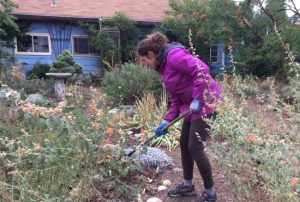
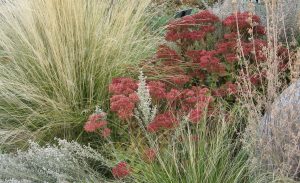
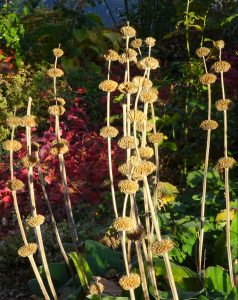
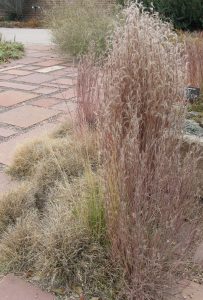 Unless you have an ‘ornamental’ grass that self-sows aggressively, leave grasses and their seedheads standing. If they are ‘cool-season’ grasses, you’ll want to leave them until about mid-February, then cut them to 3” above the ground so they can begin making unimpeded new growth as soon as the soil thaws. Dormant ‘warm-season’ grasses can remain attractive until warm weather comes and don’t need to be cut down until April.
Unless you have an ‘ornamental’ grass that self-sows aggressively, leave grasses and their seedheads standing. If they are ‘cool-season’ grasses, you’ll want to leave them until about mid-February, then cut them to 3” above the ground so they can begin making unimpeded new growth as soon as the soil thaws. Dormant ‘warm-season’ grasses can remain attractive until warm weather comes and don’t need to be cut down until April.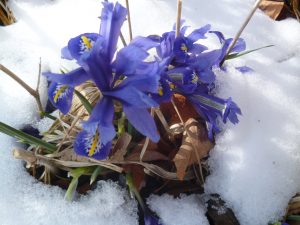
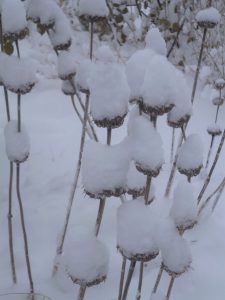
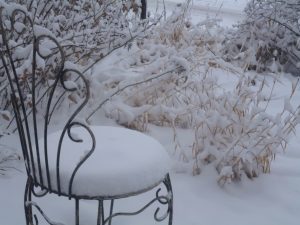
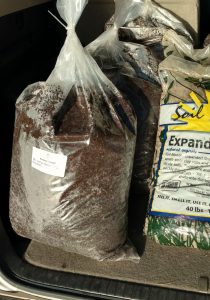 At Harlequin’s Gardens we will not be leaving our jobs on September 20. Instead we will be at work for Harlequin’s where we are always working to help you and the planet. AND we will be giving away one Free bag of compost with each purchase, on Friday, the 20th.
At Harlequin’s Gardens we will not be leaving our jobs on September 20. Instead we will be at work for Harlequin’s where we are always working to help you and the planet. AND we will be giving away one Free bag of compost with each purchase, on Friday, the 20th.
 Non-toxic Herbicides
Non-toxic Herbicides This year’s Taste of Tomato was a blast! We love the new location at Growing Gardens’ Barn, with its’ beautiful view of the Flatirons, easy access, and wonderful staff. The tasting featured 44 different varieties of tomatoes, with Aunt Ruby’s German Green winning the greatest number of votes. Participants brought in some wonderful new varieties this year, including Brad’s Atomic Grape, Thornburn’s Terracotta, and Indigo Cherry. Look for the most popular varieties from this year and previous years when you come to buy your organic tomato starts next spring at Harlequin’s Gardens. Every year we grow 80+ great varieties for all kinds of uses and growing conditions!
This year’s Taste of Tomato was a blast! We love the new location at Growing Gardens’ Barn, with its’ beautiful view of the Flatirons, easy access, and wonderful staff. The tasting featured 44 different varieties of tomatoes, with Aunt Ruby’s German Green winning the greatest number of votes. Participants brought in some wonderful new varieties this year, including Brad’s Atomic Grape, Thornburn’s Terracotta, and Indigo Cherry. Look for the most popular varieties from this year and previous years when you come to buy your organic tomato starts next spring at Harlequin’s Gardens. Every year we grow 80+ great varieties for all kinds of uses and growing conditions!